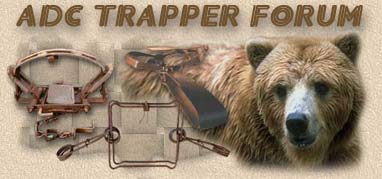Well let's just whack the hive with a stick. I have been using the DWL bat trap for many many years. If the customer is in the city I will use the trap Not in all cases in the city. I am not in the habit to getting bat out of 1 house and then go back to the neighbors to get them out of that house. In the country I'll use excluder tubes. but in the city and when the house are close together it makes for better public relations when the customer talks to the neighbor I can tell them I'm removing the bats . I DO NOT guarantee that the bats will not come back but I will guarantee there not going to get in to the house I remove them from. Here in our area the customer like the idea of having more then one way of handling bat issues.
Dew, the hive response will be too the point and not emotional or irrational (at least to most).
After reading your comments above and addressing them knowing where you live and having lived within 30 miles of your location myself for 5 years of my existence I would point out the aspects of what you are saying in a slightly different way.
1) You use the trap in the city where house density (therefore potential roost density) is at its highest point, relative to the rural landscape.
2) You use the typical exclusion (one way valves/systems) techniques in the rural landscape where house density (therefore potential roost density) is at its lowest point, relative to the city/suburban landscape.
3) You say your clients "in our area" like to have options to deal with their bats.
So if we work with this set of assumptions and keep this simply based on these points alone, I want to ask you these questions for your review and answer.
The assumption that the bats will move from the home you exclude to the one immediately adjacent assumes the adjacent home offers the same or very similar siding, roofing, access, thermal values, etc... that bats have determined is suitable. In any given neighborhood that I recall from your region there could be 20 different homes within 60 feet of each other, with a variety of exteriors and ranging from a new house to 50+ years old.
You are anticipating that excluding this wildlife species (bats) means you must remove them from the area or you are responsible for any house within a certain range (5 feet, 10 feet 50 feet, 100 feet?) of the home you exclude.
Then when out in rural northern lower MI, an area I know well and love, you would exclude the bats with just one ways and assume that since the bats using a structure (home/building) are not going to go to the immediately adjacent farm even if 100 yards or 1/2 mile up the road as they have less available roosts to choose from.
I would have to assume you realize this is likely that they will only move over the hill, but that maybe the next farm wouldn't likely know you just evicted the colony from their rural neighbor?
So for you does this come down to believing you are actually relocating the colony for good (in a permanent way)?
Or is it the potential for the neighbor to blame you for the bats you just evicted showing up at their unsealed house?
How many excluders or control folks have done work in a neighborhood where multiple homes have bats all at the same time and you can see the signs?
As Dave mentioned with regional migration in your species, why would you assume they aren't flying back before you get home?
I'm sure you only go 20-50 miles max, so how would you assume that your judgement is going to keep these animals which fly up to 300 miles from home to hibernate at this new drop location? Every year they home back to the roost from the hibernation site, so how does this make any actual logical sense to relocate them or make people believe you are relocating them or reducing risk for their neighbors?
Even the slowest flying bats in North America would make this trip in less than 2 hours from your typical drop site.
So I guess while I know your answer it doesn't seem to make sense, and while you may say, "it makes sense to me and my clients and thats all that matters." I'd have to respectfully disagree on this particular topic and technique.
"I DO NOT guarantee that the bats will not come back but I will guarantee there not going to get in to the house I remove them from."
This last statement shows that there is no merit to moving them, so why put them through it and risk the bats lives if you can exclude it, provide your warranty to the client, be paid for professional bat exclusion, and move on?
Justin





